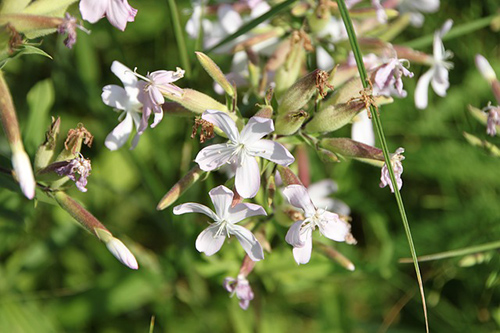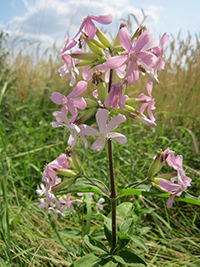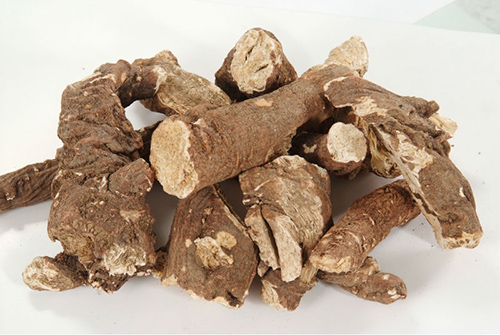Contents
In ancient times, women used the soaproot plant to wash clothes, especially wool ones. Today, it is usually employed externally for skin and hair care.

Soaproot Plant Scientific Facts
- Other names: Bouncing bet, bruisewort, dog cloves, old maids’ pink, soapwort.
- French: Saponaire.
- Spanish: Saponaria.
- Environment: Common on roadsides and slopes of humid regions throughout Europe and North America.
- Description: This vigorous plant of the Cariofilaceae family grows from 30 to 60 cm high. It has an upright stem and a large rhizome. Its pink flowers have a pleasant aroma.
- Parts of the plant used medicinally: The whole plant.
Healing Properties and Warning

The whole plant, mainly its root and rhizome, contains a saponin called saporrubine. This saponin has expectorant, diuretic, cholagogue, and depurative properties. Saponins can dissolve fats into water, producing foam.
Its most crucial action is expectorant because it can make bronchial secretions more fluid. However, although it is effective with respiratory afflictions, given its toxicity when internally used, it has been substituted with safer plants. In external application, it is helpful to combat skin eczema and rashes and wash delicate hair.
WARNING! Do not exceed the recommended dose for internal use since this plant may produce poisoning.

How to use Soaproot
- Decoction with 15 g per liter of water. Drink up to two cups daily, sweetened with honey.
- Lotions or compresses soaked in a decoction more concentrated than the one internally used.
- Poultices with sliced leaves and/or roots.
- Hair washing, with a decoction of 20 g per liter of water.
DISCLAIMER: All content on this website is presented solely for educational and informational objectives. Do not rely on the information provided as a replacement for advice, diagnosis, or treatment from a qualified medical expert. If you are pregnant, nursing, or have any preexisting medical concerns, talk to your doctor before using any herbal or natural medicines.
REFERENCES
- George D. Pamplona-Roger, M.D. “Encyclopedia of Medicinal Plants.” George D. Pamplona-Roger, M.D. Encyclopedia of Medicinal Plants. Ed. Francesc X. Gelabert. Vols. 1 San Fernando de Henares: Editorial Safeliz, 2000. 333. Print. [soaproot plant]
- Frontiers in Pharmacology: https://www.ncbi.nlm.nih.gov/pmc/articles/PMC9964560/
- Memorial Sloan Kettering Cancer Center: https://www.mskcc.org/cancer-care/diagnosis-treatment/symptom-management/integrative-medicine/herbs
